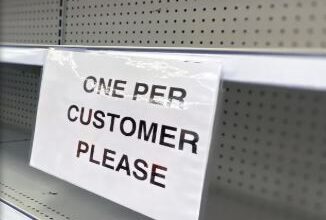Here’s How to Protect Your Wallet

[ad_1]

A new report from Moody’s Analytics highlights the pain that inflation is inflicting on us, month after month — and drops a number that puts the harsh reality in perspective.
“The typical American household needs to spend $445 per month more to purchase the same goods and services as a year ago,” the report says, based on September’s 8.2% overall annual inflation rate.
Many of us can’t afford an extra $445 per month and have had to make financial sacrifices this year — all the while hoping things don’t get worse.
It’s worth knowing there are specific things you can do to protect your finances from inflation. Here’s a look at some proactive steps you can take to soften the blow.
Buy I bonds

In normal times, investors focus on putting what they can afford to — and sometimes more — into the stock market, which over the past century has averaged around a 10% annual return. Investing in bonds to diversify is an afterthought for many because they don’t typically offer similar returns. Their value is in being predictable.
Federal Series I savings bonds, often called I bonds, are as predictable as ever. But because of inflation, they also currently offer something much more appetizing: a 9.62% return, risk-free.
But if you want that rate, you should act now. It changes Nov. 1, as it does every six months, and experts believe it will fall below 6.5%.
Learn how to purchase I bonds and much more in our story “7 Things You Should Know Before Investing in I Bonds.”
Plan around the most inflated categories

You’ve probably noticed at the grocery store that prices haven’t risen evenly on everything. Some items get more expensive seemingly every month, while others don’t really budge. It’s possible to identify what shopping categories are most inflated and start to make meal plans with substitutions or decreases in mind.
The way to do this is to glance at inflation data the federal government publishes in the Consumer Price Index each month. Or you can let the USDA do it for you — it publishes a monthly summary of changes and forecasts price changes several months from now.
Check out our story “10 Simple Grocery Swaps That Can Save You Big Money” for ideas.
Don’t bridge the inflation gap with credit cards

It can be tempting to use credit cards to keep buying things in the same way you’re used to, even as prices continue to jump, jump, jump.
You may intuitively recognize that’s not sustainable, but less apparent is how inflation makes the costs of borrowing money go up, too, at least when inflation prompts the Federal Reserve to raise the federal funds rate. When that happens — as the Fed has done numerous times so far this year — variable interest rates on most credit cards spike.
That means, effectively, you’re being hit with inflation twice — first when you put price-inflated stuff on the card, and again if you’re not fully paying it off each month.
Credit reporting company Experian explains:
“Credit card issuers typically pass on these higher interest rates to their cardholders by raising the annual percentage rates (APRs) on their credit cards. APR hikes translate to additional interest costs on any balances you carry month to month.”
Focus on paying down debt

Because inflation makes carrying debt even more expensive than usual, it’s more valuable to work hard on paying it off. Though it’s tough to make headway when your budget is already being squeezed, stories like “How to Pay Off $10,000 in Debt Without Breaking a Sweat” can help. And there are fortunately other steps you can take to tackle inflation on debt.
One idea is to consider whether a balance transfer from one credit card to another could save money. A balance transfer is more than just rearranging the deck chairs on the Titanic — the 0% APR period, which can last as long as 21 months on some cards, can be a life raft to keep you afloat until the sea of inflation calms.
But if the idea of another credit card makes you seasick, a second option is to seek a fixed-rate loan with an interest rate lower than the APR on your current cards. That could consolidate multiple variable payments into one steady, manageable payment. However, you still need to do some math to make sure the fees on the front end don’t outweigh the benefits.
In general, for those who can, it’s best to put off borrowing money until interest rates come down again.
Source link





